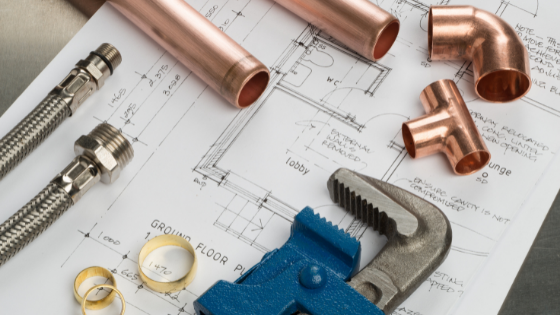The plumbing system is complex and made with a variety of fixtures and fittings. Plumbing pipes come in various materials, shapes, and sizes. So if you ever need your pipes repaired or replaced, here are five types you will come across.
- PEX
PEX, or cross-linked polyethylene, is only used to supply water. It is rigid enough to withstand the pressures of water supply, but flexible enough to weave through walls, ceilings, basements, and crawl spaces. It’s a relatively new type of pipe, but has become widely popular in the plumbing industry.
Pros:
- Can be joined to copper pipes
- Easy to cut
- Can be attached to push-fit plumbing fittings
Cons:
- May leak with push-fit plumbing fittings
- Can’t be recycled
- PVC
PVC stands for polyvinyl chloride and is a drain or vent line pipe. It is lighter and easier to work with than traditional galvanized steel pipe, and can be glued to other PVC pipes with solvents.
Pros:
- Diameters are clearly marked on the surface
- Inexpensive
- Can be used for long runs
Cons:
- Cannot be unjoined and must be cut
- Prone to leaking if poorly installed
- Degrades in sunlight
- Rigid Copper
This type of pipe is used for water supply lines and can be easily cut. In addition, rigid copper pipes don’t pose any health risks.
Pros:
- Good heat tolerance
- Able to withstand intense pressure
- Recyclable and has monetary value even after use
Cons:
- Difficult for DIY projects due to soldered connections
- Expensive
- ABS
The acrylonitrile butadiene styrene (ABS) pipe is used as a vent and drain line. It is black and slightly softer than a PVC pipe.
Pros:
- Stronger than PVC pipes
- Suitable for underground exterior use
- Tolerates cold temperatures
Cons:
- Often not permitted by building codes
- At risk of warping and deforming at certain temperatures
- Galvanized Steel and Cast Iron
Older homes are more likely to have galvanized steel and cast iron pipes. Galvanized steel pipes were traditionally used for drainage, water supply, gas supply, and other purposes.
Cast iron pipes were traditionally used for sewer and other drainage purposes.
Pros:
- No pros, but still required in some applications, like natural gas
Cons:
- Eventually corrodes and blocks water flow
- May pass lead into the water supply

